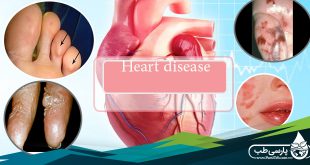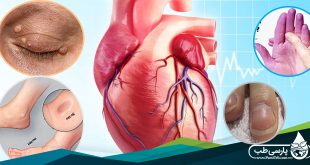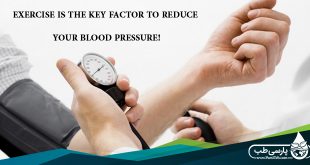basic information about heart disease
Arteries
The heart supplies blood to itself through two coronary arteries and to parts throughout the body through 20 major arteries. These arteries are pliable tubes with thick walls that enable them to withstand the high blood pressure they endure each time the heart beats. This structure helps even out the peaks and troughs of blood pressure caused by the heartbeat, so that blood flows at a relatively constant pressure by the time it reaches the smaller blood vessels. An artery’s walls consist of three layers: a smooth inner lining that allows blood to flow easily; a muscular elastic middle layer; and a tough fibrous outer coating to protect the artery from damage.
When the heart is working hard—such as during exercise — the heart can pump blood out five times the amount of blood it pumps at rest. To accept this much extra blood, all the arteries in the body need to dilate or widen.
Arteries can be thought of as a tree in which the trunk splits into smaller and small branches and twigs. The main artery, the aorta, arches from the left ventricle with oxygen-rich blood, runs down through the chest and into the abdomen. Major arteries branch off from the aorta; they split into smaller and smaller arteries, then to still smaller vessels called arterioles, and finally into tiny capillaries.
The Vascular System
Spreading out from your heart, a network of arteries, veins and tiny capillaries delivers oxygen and nutrients to every cell in the body, while veins return carbon dioxide and waste materials to the heart. The circulatory system was first described in the 17th century by British physician William Harvey, who concluded that blood flows through the body in a continuous circuit. Prior to that it was believed that the blood, produced in the liver, was dispatched by the heart to reservoirs, where it waited until it was needed.
While the main function of blood is to act as the body’s transport system, it also plays a major role in the defense against infections.
The circulatory system (heart and blood vessels) consists of two main parts: the systemic circulation, which comprises the blood supply to the entire body except the lungs, and the pulmonary circulation to the lungs, which is responsible for reoxygenating the blood and removing carbon dioxide.
You have three types of blood vessels in your body: arteries , veins and capillaries.
Veins
The seven major veins in the body bring blood back toward the heart. From the capillaries blood enters small veins, called venules, that merge into larger and larger veins, until they finally join the body’s largest vein, the vena cava, returning the oxygen-poor blood to the right atrium of the heart. The vena cava actually has two branches: the lower branch brings blood from the lower part of the body, while the upper branch carries blood from the upper part of the body and the brain.
On its journey from the heart to the tissues, blood is forced through the arteries at high pressure. But on the return journey through the veins and back to the heart, the blood flows at low pressure. It’s kept moving by the muscles in the arms and legs that compress the walls of the veins, and by valves in the veins that prevent the blood from flowing backward. Because each type of blood vessel performs a different job under very different pressure, the structures of the arteries, veins, and capillaries are quite different.
Veins also have three layers, but since the blood pressure in the veins is much lower than in the arteries, the vein walls are thinner, less elastic, less muscular and weaker than arteries. The inner linings of many veins contain folds, that act as valves, ensuring that blood flows only toward the heart.
Blood
The average-sized adult has about 10 pints of blood, called “units” by blood banks. At rest, that entire quantity is pumped by the heart via the arteries to the lungs and all other tissues every minute. Almost half the volume of blood consists of cells, which include red blood cells, white blood cells and platelets. The remainder is a watery fluid called serum, which contains dissolved proteins, sugars, fats, minerals and other chemicals.
Trillions of red blood cells (erythrocytes) carry oxygen from the lungs to the tissues, where it’s exchanged for the waste product carbon dioxide. Red blood cells get their color from the iron-containing protein called hemoglobin, which carts oxygen and carbon dioxide through the blood. The flexibility of red cells, which are thin in the center and thick at the edges, makes it possible for them to fit through even the narrowest blood vessel. Red cells survive about three to four months but are rapidly replaced.
White blood cells (leukocytes) play an important role in defending the body against infection by viruses, bacteria, fungi and parasites. The five types of white cells, which multiply as needed, can pass through the capillary walls to pursue invading organisms within the body’s tissues.
Platelets (thrombocytes) are essential for arresting bleeding and repairing damaged blood vessels. They are formed in the bone marrow and survive for about 10 days in the blood.
Blood plasma is a straw-colored fluid, consisting mainly of water (95 percent) with a salt content similar to seawater. Plasma also serves to transport nutrients, waste products, proteins and hormones throughout the body.
Clotting is the process by which blood becomes solid. Clotting starts almost immediately at the site of a cut and helps limit blood loss by sealing damaged blood vessels. However, if abnormal clotting occurs in a major blood vessel, it may trigger a heart attack, stroke or other major disorder.
The clotting process has two main parts: platelet activation and the formation of fibrin filaments.
Platelets are activated by coming into contact with damaged blood vessel walls, where they become sticky and then clump together to block small holes. These clumps release chemicals that begin the process of clotting by forming filaments of fibrin at the site of injury. The fibrin filaments enmesh the platelets along with red and white blood cells. Once the cut blood vessel is plugged by the mass of fibrin, platelets and red and white blood cells, the fibrin filaments contract to form a solid clot.
 Parsi Teb Physical and Mental Health Journal
Parsi Teb Physical and Mental Health Journal 



